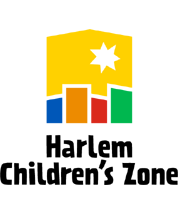Restorative Practices
Restorative Practices Video Introduction
Restorative practices is an emerging social science that studies how to strengthen relationships between individuals as well as social connections within communities” – International Institute for Restorative Practices
The purpose is to build healthy communities, increase social capital, decrease disruptive and antisocial behavior, repair harm and restore relationships.
Use these resources to dig-deeper and expand your knowledge of Restorative Practices!
Two Paradigms: Power-Based and Collective Based
- Read A Tale of Two Paradigms
- Reflect on the following questions:
- What are the characteristics of zero-tolerance (traditional) discipline approaches?
- What are the characteristics of restorative discipline practices?
- To what extent does each meet the needs of students, teachers, families?
- To what extent does each likely support improvement to the academic performance profile of the school
Relationships*Relationships*Relationships!
Consider the state of relationships in your child’s school community. Reflect on the questions below.
- How do schools build and foster relationships between staff?
- How do schools build and foster relationships between students?
- How do schools build and foster relationships between staff and students?
- How do schools build and foster relationships between families and the school?
Connection + Challenge = Change
Think about a leader or mentor whose advice you have sought and taken.
- How does your experience relate to this formula?
- What is the value of social capital in supporting individuals to change?
Understanding the Social Discipline Window
Participants Complete My SDS (Social Discipline Style) Worksheet
- In which box is your SDS located most of the time when you consider your work with students?
- Did you find yourself in multiple boxes?
- What influences your placement in the predominant box?
- Is your placement different when you are with family and colleagues? If so, why?
- If your school were assigned an SDS, in which box would it be located?
The Issue of Shame and Its Impact on Positive Discipline
Read more about the issue of shame:
- What does shame have to do with restorative discipline?
- How is shame destructive to ourselves and others?
- How can shame be “harnessed” to help transform behavior?
Affective Language and Restorative Questions
- What is affective language?
- How accessible is it to most people and under most circumstances?
- What are restorative questions? How do they make use of affective language? How are they different from questions that an administrator, in a zero-tolerance environment, might pose to a student who is written up by a teacher for disrespectful behavior or fighting?
The Magic Circle: The Power to Connect and Heal
Refer to and/or play videos referenced in the Prepare for the Session instructions.
- What gives the Circle its special meaning in restorative work?
- What are the mechanics of organizing a circle in a classroom? Is it necessary to have participants sit in a circular arrangement or is the Circle a conceptual element that signifies something that the convener wants to convey?
- How are proactive and reactive circles different?
REFER TO OUR QUICK REFERENCE SHEETS

